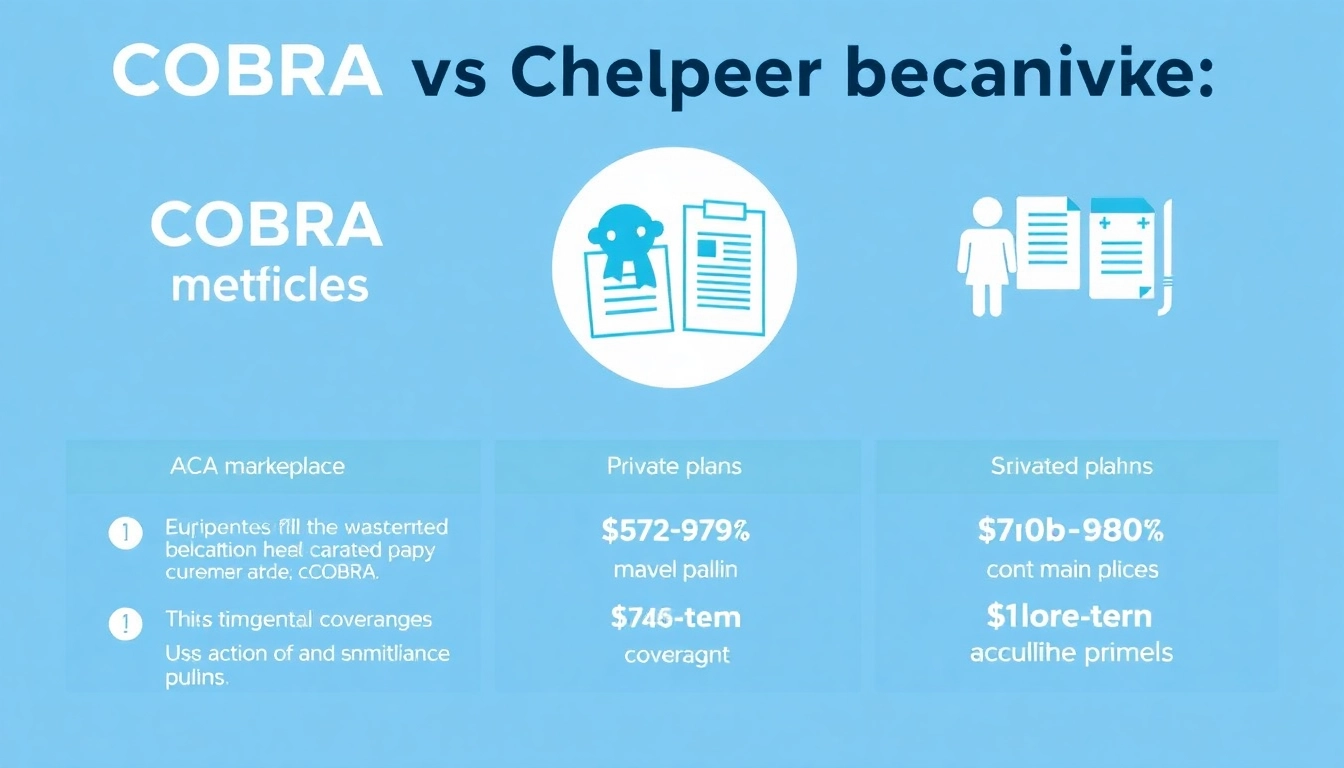Comparing COBRA with cheaper alternatives can lead to substantial savings without sacrificing essential coverage. This article aligns with the COBRA Health Insurance Alternative Plans overview and translates it into actionable steps you can take today. For a quick starting point, explore Cheaper alternatives to COBRA insurance and then dive into practical options that fit your family’s needs and budget.
Understanding COBRA and Cheaper Alternatives to COBRA Health Insurance
What makes COBRA costly and why Cheaper Alternatives matter
COBRA extends your employer’s health plan, but it often requires paying the full premium plus administrative fees. This can mean dramatically higher monthly costs compared with individual market options. The coverage itself may be robust, but the price tag creates a barrier for many families, leading to delayed care or gaps in protection.
COBRA vs ACA Marketplace: clear comparison points
Consider these key differences when choosing between COBRA and ACA Marketplace plans: monthly premiums (often lower on ACA plans with subsidies), breadth of subsidies eligibility, network breadth, coverage of pre-existing conditions, and enrollment timing (Open Enrollment vs. Special Enrollment Periods). ACA plans also include essential benefits and consumer protections that can translate to real-world savings and value.
Who benefits most from Cheaper Alternatives to COBRA Insurance
Cheaper alternatives tend to benefit those who qualify for subsidies, those who anticipate staying on coverage for a shorter period, or households seeking more flexible enrollment. Individuals between jobs, recent graduates, or workers transitioning to self-employment often find ACA Marketplace plans, private options, or short-term coverage a smarter fit than paying COBRA’s full premium.
Top Options as Cheaper Alternatives to COBRA Insurance in 2025
ACA Marketplace Plans: subsidies, coverage, and enrollment
ACA Marketplace plans offer comprehensive coverage with standardized benefits and the possibility of premium tax credits. Depending on household income, these subsidies can dramatically reduce monthly costs. Open Enrollment sets the annual window to enroll, while Special Enrollment Periods extend eligibility after qualifying life events. This combination often results in more affordable protection with robust coverage for groceries, doctors, and medications.
Private Health Insurance: flexibility, networks, and year-round access
Private plans deliver a broad range of networks (PPOs, HMOs, and indemnity options) and typically allow enrollment outside Open Enrollment in many states, depending on the plan. They offer flexibility in deductibles, co-pays, and out-of-pocket maximums, making it easier to tailor a plan to your budget and preferred providers.
Short-Term Medical: bridge coverage with cost savings
Short-Term Medical plans provide bridge coverage at lower costs, ideal for gaps between jobs or waiting for employer benefits. They are designed for shorter durations and may exclude pre-existing conditions, limiting their suitability for ongoing care. Use them strategically to minimize coverage gaps while you pursue longer-term solutions.
ACA Marketplace and Subsidies: A Closer Look at Cheaper Alternatives
How ACA plans create affordable Cheaper Alternatives to COBRA Insurance
ACA plans standardize benefits, ensuring essential health services are covered, while subsidies reduce the monthly premium. For many households, the combination of subsidies and broad coverage makes ACA plans the most cost-effective route to reliable protection, especially when COBRA’s full price is prohibitive.
Open Enrollment vs. Special Enrollment Periods for COBRA-offsetting plans
Open Enrollment occurs once a year, but life events (loss of coverage, marriage, birth) trigger Special Enrollment Periods. These SEPs enable timely access to ACA or private plans without waiting for the next Open Enrollment, helping prevent gaps after COBRA ends.
Qualifying for ACA subsidies to lower monthly premiums
Subsidy eligibility hinges on household income and family size. By estimating annual income and exploring available tax credits, many families reduce premiums significantly. Our licensed agents can help determine if you qualify for subsidies and guide you through the enrollment process.
Private Insurance and Other Alternatives to COBRA
Private plans vs COBRA: what’s actually covered
Private plans often mirror COBRA in core benefits but can offer more favorable cost-sharing structures, broader networks, or more flexible start dates. Read the plan details to confirm coverage for routine care, hospital stays, prescription drugs, and preventive services. In many cases, private plans deliver comparable protection at lower or more predictable costs.
Health Sharing Plans: risk-sharing options and considerations
Health sharing plans operate on a community-funded model rather than traditional insurance. They can offer substantial cost savings but come with risk-sharing caveats, limits on pre-existing condition coverage, and variable provider networks. These plans require careful assessment of coverage limits, exclusions, and what happens if a medical need exceeds sharing contributions.
Enrollment tips to maximize Savings on Cheaper Alternatives to COBRA Insurance
To maximize savings, compare multiple options side-by-side, verify network compatibility with your preferred doctors, check drug formularies, and consider subsidies or employer-based factors. Prioritize plans with predictable premiums, deductible alignment with your expected care, and robust preventive care coverage.
Practical Steps to Find and Enroll in Cheaper Alternatives
Using our plan finder tool to compare ACA, private, and short-term options
Our plan finder consolidates ACA Marketplace plans, private options, and short-term coverage to help you identify the best balance of price and protection. Use the tool to filter by monthly premium, deductible, network size, and coverage for prescriptions, then narrow to plans that align with your family’s health needs and budget.
Evaluating network coverage, providers, and prescription benefits
Network breadth matters for access to your current doctors and preferred hospitals. Verify that your essential medications are covered with affordable co-pays or generic options. A plan with a wide network and favorable drug coverage often yields lower out-of-pocket costs over a year.
Steps to avoid gaps and ensure continuous coverage after COBRA ends
Plan ahead: know your COBRA end date, explore an SEP if eligible, and start enrollment early to prevent coverage gaps. Consider a private plan or ACA plan with a seamless transition and guaranteed issue features to maintain uninterrupted protection.
